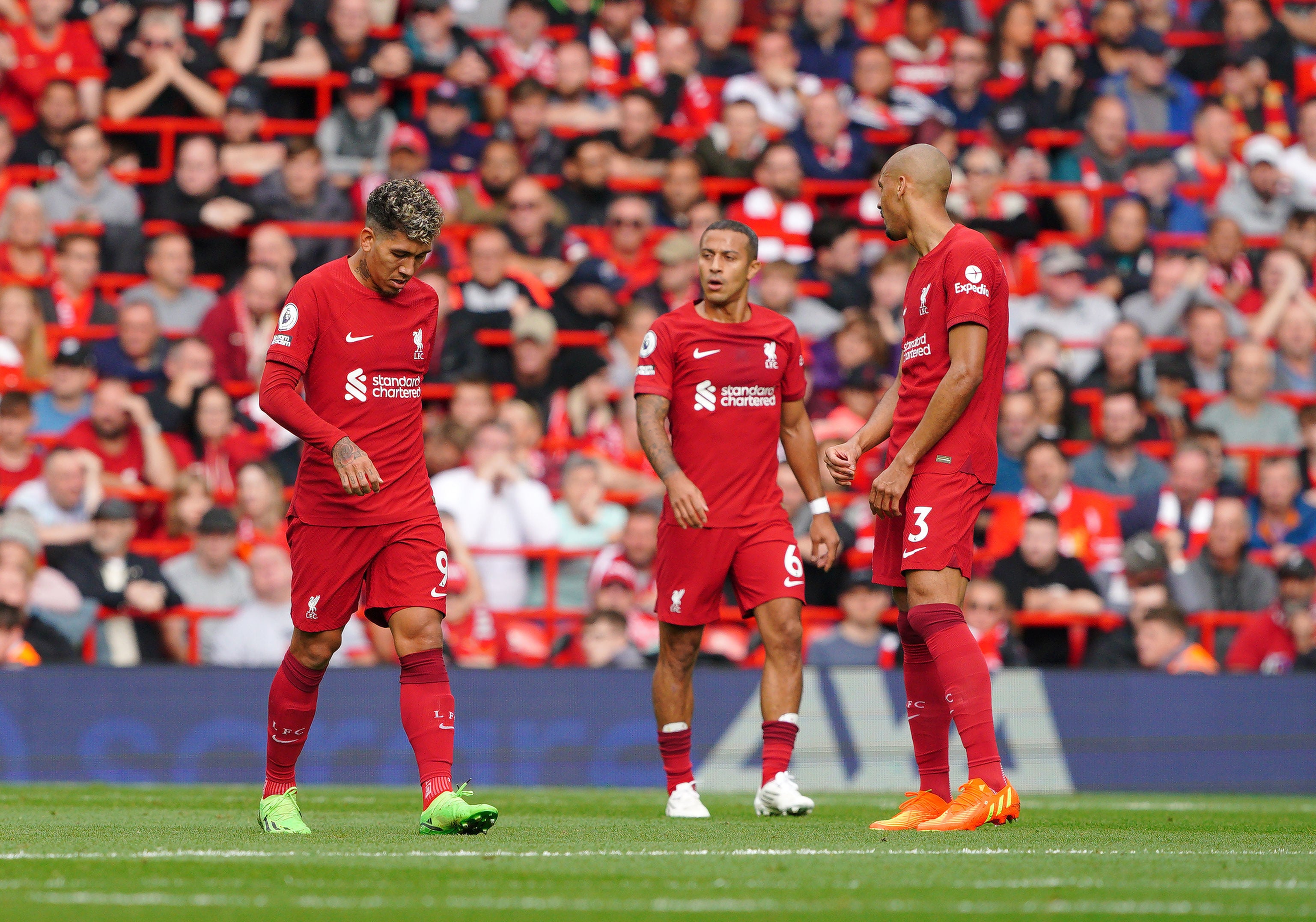
It wasn’t a replay as much as a tape that seemed stuck on the same loop, the video nasty that appeared to confirm Gareth Southgate’s opinion that Kieran Trippier has a better all-round game than Trent Alexander-Arnold. At half-time inside Anfield, the television screens that can be viewed internally showed Brighton’s first two goals time and time and time again. And then again.
There was Alexander-Arnold, with a poor header out to allow Brighton to regain the ball; it is a weakness in his game, when a diagonal ball finds him at the far post. There he was, beaten too easily by Leandro Trossard before he opened the scoring; he is not a one-on-one defender of the calibre of Kyle Walker. There he was, attempting an audacious bit of chest control, only for Danny Welbeck to head the ball away from him in the build-up to Trossard’s second. Jurgen Klopp had mounted the case for the defence of Alexander-Arnold in eloquent, impassioned fashion on Saturday. The prosecution could show the footage and not worry about the words.
The strongest adjectives Klopp deployed after the 3-3 draw with Brighton were “horrendous” and “horrible.” Neither was applied to Alexander-Arnold, though the Liverpool manager said his side could have defended all three goals better. Defending, Klopp argues, is a collective endeavour. The back four are the obvious culprits when goals go in. “From the outside, that’s fine,” said Virgil van Dijk, who has admitted his own performances have dipped below his usual standards. “It’s more complex than that. Defending starts from the front.”
And yet, despite Alexander-Arnold’s eye-catching errors, the structural problems may have come in the middle. “I don’t know how many times I saw their offensive players just turning between the lines, it was horrendous, really horrible to watch,” said Klopp. Trossard’s contributions in the penalty box made him the first visitor since 2009 to depart Anfield with a hat-trick but his capacity to emerge unchecked between the lines was also instructive.
Brighton prospered where, in old-fashioned terminology, an inside-left and inside-right might have been; it was often Trossard, sometimes Pascal Gross or Solly March or Moises Caicedo or Welbeck. “Our gaps in the areas where they want to play were too big, obviously,” said Klopp; that Graham Potter bequeathed Roberto De Zerbi a squad laden with players who like to pop up in the No. 10 position helped, but they proved elusive in the half-spaces either side of Fabinho, who has lacked his usual dominance, behind Jordan Henderson and Thiago Alcantara.
The names had a certain significance. Liverpool’s midfield has been disrupted and disjointed, frayed and unfamiliar at various times this season, but with very different combinations. Yet this was the Champions League final trio, the engine of Klopp’s strongest side, an experienced threesome who were supposed to lend solidity. They were united for the first time since Thiago went off after half an hour at Fulham on the opening day. They have still only lost one game all three have started as a midfield trio; to Real Madrid in Paris. They had never conceded three in a game when each was at the heart of the side; in the last two seasons, there was only one game, at Brentford, when two began in midfield and Liverpool let in three.

The gaps, the space between the lines was uncharacteristic. Klopp’s full-backs can be caught ahead of the ball, but rarely his midfielders - it is a reason why they deliver so few goals and assists – but Trossard and co got behind them. It is why the definitive Klopp midfielder remains Gini Wijnaldum in about 2019; the understated workhorse who provided a platform. For Klopp, problems should be solved at source, with a proactive approach to preventing chances; what first seemed ferocious gegenpressing then became a more calculated one to snuff opponents out.
“Pressure, that is always what we try to do,” Van Dijk explained. “Get in the right spaces and do it all together. We’ve been doing it for four or five years on a consistent basis, and we have to get back to that consistency, all of us.”
When that pressure is relaxed, the high defensive line that can be a source of strength can become a point of weakness instead. “A lot of runners in behind, not much pressure on the ball, things we have to do much better,” Van Dijk added.
When 3-2 up on Saturday, Klopp felt his side were caught between two strategies, successfully pursuing neither. “Then we were not sitting deep, not defending high but somewhere in between,” he said.
It was a lack of conviction that led an unrepentant Remainer to say his side needed to take back control. He probably meant in midfield, and not merely because Fabinho and Thiago misplaced uncharacteristically high percentages of passes. The midfield used to shield Alexander-Arnold. But if his mistakes were the most glaring ones, the sense was that Klopp was horrified more by the failings of the defensive midfielders than the attacking right-back.







